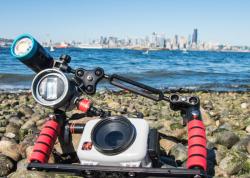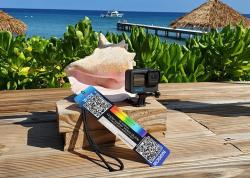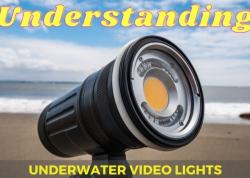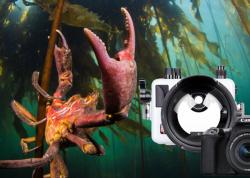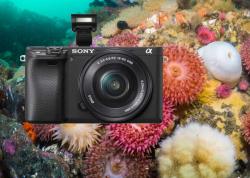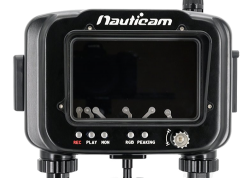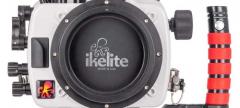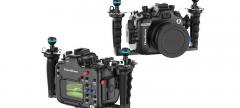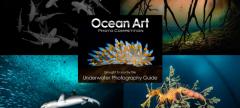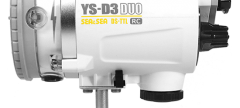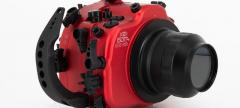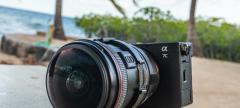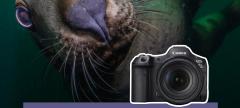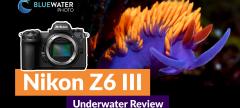Olympus TG-6 Wide Angle Photography: FCON-T02 Fisheye Lens
The Olympus TG-6 is a popular compact camera for underwater photography, particularly macro photography. Until recently the Olympus TG-6’s potential as a wide angle set up was limited by it’s lack of a manual mode. Without modifications, wide angle underwater photography with the Olympus TG-6 usually results in the camera selecting shutter speeds that are too low or apertures that are too wide underwater. This is because the Olympus TG-6 tends to select quicker shutter speeds and smaller apertures when zoomed in underwater.
Fortunately, Ikelite solved this problem, and created a larger artistic pallet, by taking the Olympus FCON-T02 fisheye converter lens underwater and making a dome for it.

Olympus FCON-T02 Fisheye Converter Lens
The Olympus FCON-T02 Fisheye converter lens is a circular fisheye lens – which means it produces a circular fisheye image when zoomed all the way out. Fortunately, as you zoom it, it becomes a normal fisheye with great optical properties underwater. If you zoom even further and engage the macro autofocus mode on the camera, you can take 30mm equivalent macro photos! So there multiple fields of view in one great lens. The FCON-T02 itself is waterproof to 20 meters. With the dome and housing you can go down to 60 meters (200ft).
Ikelite Dome Port for the FCON-T02
The Ikelite dome port for the FCON-T02 fits on the Ikelite housing for the Olympus TG-6. It is attached by easily twisting off the original port. Sometimes a strap wrench can help the process, but I did it with my hand. The dome port screws on and the FCON-T02 fits inside of the housing. This makes the Ikelite TG-6 set up a dedicated wide angle set up for the dive. However, the zooming ability of the camera allows it to take some macro photos. Overall, we loved the optical quality of the dome. The corners are sharper than taking wide angle with the TG-6 with a wide wet lens. The set up is conducive to smaller apertures and more detail in wide angle images. Moreover, the dome makes it possible to take over-under photos. However, if the sun hits the lens in a certain way, we did notice a slight reflection in the dome. This is easily removed it post-processing if it does appear.
Bluewater Photo Ikelite TG-6 FCON-T02 Dome and Package:
Ikelite Dome Port for Olympus FCON-T02 Fisheye
Ikelite Olympus TG-6 Wide Angle Package
Fields of View with the FCON-T02
Circular Fisheye
Zoomed all the way out, the FCON-T02 is a circular fisheye lens. This means you get an equal, fisheye field of view both horizontally and vertically, creating a circle affect. This field of view has historically been limited to high-end DSLR cameras as a creative, niche genre of photography. With the FCON-T02 fisheye, it’s now possible for photographers on lighter budgets to take cool and creative circular underwater photos.
Because the TG-6 is zoomed all the way out in the circular fisheye mode, the settings chosen by the camera will be less ideal than at other fields of view. The TG-6 will tend to shoot at slower shutter speeds and wider apertures, so it’s important to get the right focal point and stay still while shooting at this angle. The camera will also tend to capture more ambient light and less strobe light than when it’s more zoomed in.
Fisheye
The FCON-T02 really shines underwater at a “standard” fisheye field of view. This is when the optical properties of the lens are the best, and the camera chooses the best settings underwater. We took the FCON-T02 cage diving on the Socorro Vortex with great white sharks and kept it at its fisheye field of view. It was perfect for photographing the sharks as they came in close to the cage. The lens really captured the dynamic range well at this field of view as you can see with the sun rays in the shark images.
Macro
Believe it or not, the Olympus FCON-T02 can also capture macro photos – even with the dome. They aren’t as zoomed in or detailed as the TG-6’s famous microscope mode, but it is a very nice perspective to have underwater. To capture this type of macro, zoom the camera all the way in, and change the autofocus mode to “macro AF.” This will let you get close to your subject to take a macro photo. Be careful not to bump the subject and scratch the dome! Perfect exposure and black backgrounds is particularly easy when shooting with the Ikelite RC1 TTL converter and an Ikelite DS strobe.
Conclusion
We think the Ikelite dome with the Olympus FCON-T02 fisheye conversion lens will be revolutionary for Olympus TG-6 shooters. The Olympus tough series has always been known as a macro camera and for good reason – it’s wide photos just haven’t been as good…. Until now! The FCON-T02 lens really brings this camera’s wide capabilities up to par with its macro underwater.
We loved the detailed images we captured – and each one had sharp corners! We also loved the fact that the camera was able to choose the right settings with this lens better than it could have by itself. But most importantly, the wide range in field of view gives the user a huge artistic pallet for any situation.
Bluewater Photo Ikelite TG-6 FCON-T02 Dome and Package:
RECOMMENDED ARTICLES
SUPPORT THE UNDERWATER PHOTOGRAPHY GUIDE:
The Best Service & Prices on u/w Photo Gear
 Visit Bluewater Photo & Video for all your underwater photography and video gear. Click, or call the team at (310) 633-5052 for expert advice!
Visit Bluewater Photo & Video for all your underwater photography and video gear. Click, or call the team at (310) 633-5052 for expert advice!
The Best Pricing, Service & Expert Advice to Book your Dive Trips
 Bluewater Travel is your full-service scuba travel agency. Let our expert advisers plan and book your next dive vacation. Run by divers, for divers.
Bluewater Travel is your full-service scuba travel agency. Let our expert advisers plan and book your next dive vacation. Run by divers, for divers.





